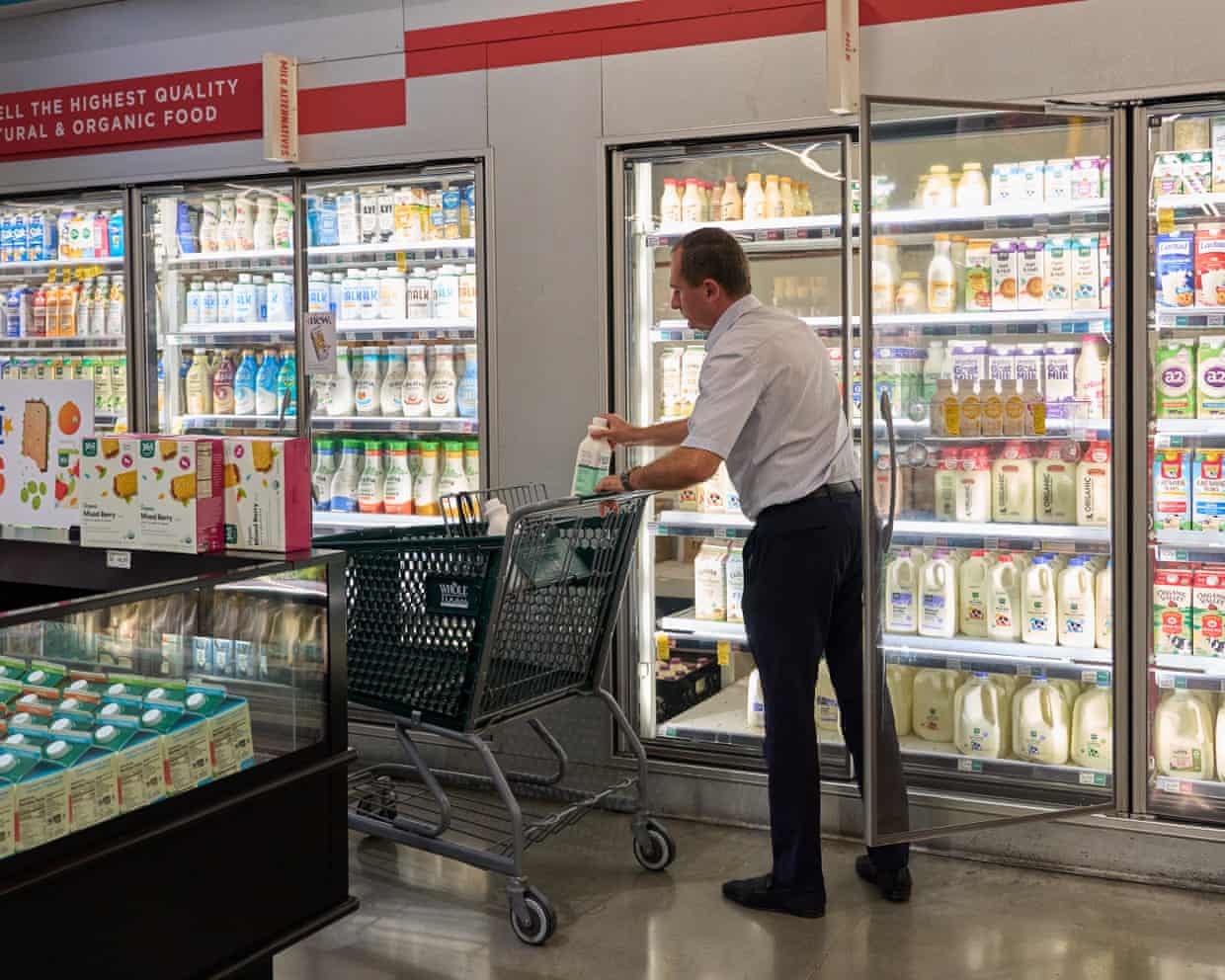As the cost of everyday goods continues to climb, many American families are feeling the pinch from tariffs introduced by the Trump administration. For Paige Harris, a 38-year-old mother of two and teacher’s assistant in Stella, North Carolina, grocery shopping has become a balancing act.
“Items I used to buy regularly have steadily gone up in price,” Harris said. “From hair dye to baby formula, our grocery list has shrunk, while our budget keeps growing. Meats like steak are off the table for us now.”
Harris is one of nearly 40 Americans interviewed by the Guardian who described the financial impact of the tariffs in the six months following their announcement. A recent S&P Global study projected that US companies could face at least $1.2 trillion in additional expenses this year. Economists estimate that about two-thirds of that expense, roughly $900 billion, will be passed on to consumers. Last month, the Yale Budget Lab suggested households might end up paying nearly $2,400 more annually because of these trade measures.
For many, the reality of rising prices clashes sharply with the Trump administration’s pledge to make goods more affordable for Americans. “Prices are soaring. It’s become clear that this administration does not prioritize the everyday lives of people like me,” Harris said.
Older Americans on fixed incomes are feeling particularly vulnerable. Jean Meadows, a 74-year-old retiree from Huntsville, Alabama, said her weekly budget has changed drastically. “Prices are way too high. I mostly shop at Costco now and buy as little as possible anywhere else,” she explained. Similarly, Myron Peeler, who cares for his wife with severe arthritis, noted that the bread he buys has doubled in price within a year. “The only relief is that our house and car are paid off,” he said.
Despite the financial strain, the White House continues to defend its tariff strategy, arguing it will boost American manufacturing and generate additional revenue from trade partners. Most recently, President Trump threatened a 100% tariff on Chinese goods in response to Beijing’s export restrictions on rare earth minerals—essential for items ranging from electric vehicle batteries to medical equipment. While the president acknowledged in an interview with Fox News that the proposed tariffs were “not sustainable,” he framed the decision as a response to “very hostile” actions by China.
Currently, average US tariffs on Chinese imports sit at roughly 58%, according to the Peterson Institute for Economics, and everyday Americans are feeling the effects. Michele, from northeastern Pennsylvania, described her struggle to purchase affordable tires for her car. “We need new tires but can’t afford the $250 per tire prices,” she said.
Many Americans also report shortages in addition to higher costs. Natalie, a 55-year-old from New Hampshire, hasn’t seen some pantry staples for months. “Store shelves have become bare. Instead of multiple options, there may be just one or two, and name brands are being replaced by store brands,” she explained.
For Minnie, a 55-year-old food writer in Portland, Oregon, the impact of tariffs has gone beyond groceries—it has altered lifestyle choices. “I don’t shop for non-essentials. No fall shopping trips for new clothes, and we’ll make our own Christmas presents this year. Dining out used to be weekly; now it’s nonexistent,” she said.
Even with inflation easing to around 2.9%, the tariffs continue to exacerbate financial stress. Richard Ulmer, 81, who has lived in Florida for 35 years, said, “This year has been the worst financially. Everything from groceries to utilities costs more.”
Younger Americans, too, are adapting. Cassie, a 25-year-old consultant from Siler City, North Carolina, described a sudden squeeze on her $65 weekly grocery budget. “I now have to visit at least four stores in different towns to find the best prices. During the Mexico/Latin America tariff announcement, Walmart ran out of bananas for nearly two weeks,” she said.
For millions of Americans, the introduction of tariffs has become more than an economic issue—it has become a daily challenge, reshaping shopping habits, household budgets, and lifestyle decisions. As policymakers maintain these trade measures, families across the United States continue to navigate the rising cost of living, uncertain about what comes next.

